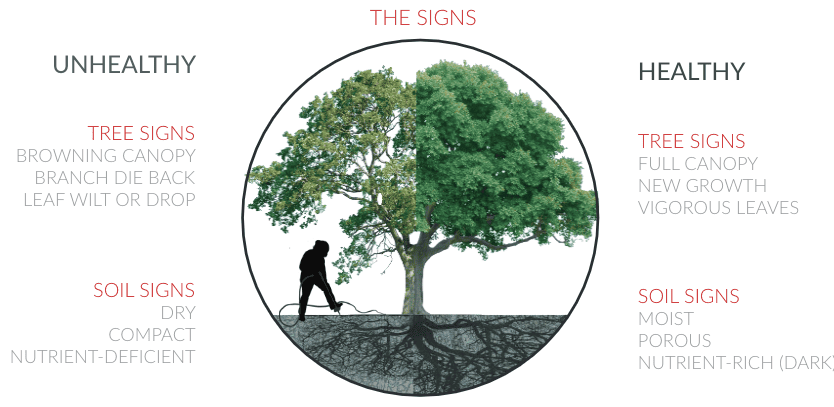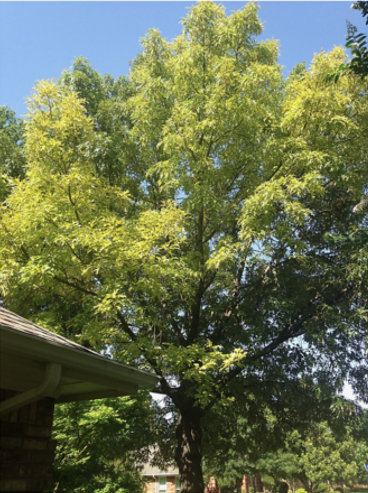Professional Tree Fertilization Service
Trees, like any living organism, require nourishment to thrive. Trees can “feed” themselves through photosynthesis, but their roots and soils often need an extra boost with fertilization. At A Plus, we believe in taking care of trees from the inside out and from the roots up.
Did you know that 90% of tree health problems start below ground? By fertilizing and taking care of tree roots and soils, you can help prevent many issues from happening in the first place!
The Science Behind Tree Fertilization
Trees absorb essential nutrients from the soil to support their growth and development. However, in urban environments or areas with depleted soil, trees often struggle to obtain enough nutrients. The primary nutrients trees need are nitrogen, phosphorus, and potassium.
– Nitrogen (N): Promotes leafy, green growth and enhances photosynthesis.
– Phosphorus (P): Improves root development, flowering, and fruiting.
– Potassium (K): Helps overall stress resistance and disease prevention.

Do My Trees Need To Be Fertilized?
Whether or not your tree needs fertilization depends on soil composition, tree species, and environmental conditions. Here are some signs to look for:
- Slow Growth: If your trees are showing slow or stunted growth, the soil may lack essential nutrients.
- Yellowing Leaves: Yellowing leaves, or chlorosis, can be a sign of nutrient deficiency.
- Poor Soil Quality: In areas with poor soil quality or recent construction, soil nutrients may be absent or lacking
- Stress Factors: Trees subjected to stress, such as construction activities or severe weather, may benefit from additional nutrients to aid recovery.
The Importance of Fertilization Services
By investing in fertilization services, you are being proactive and improving the long-term health and beauty of your trees. Fertilizing your trees as needed helps with:
- Disease Resistance
- Stress Resistance
- Stronger Root Development
- Canopy Greening
- Improved Flowering and Fruiting
- Longer Tree Life Span


Quick Tips to Boost Soils
1. Mulch
Mulch is cheap and helps trees in so many ways – retains moisture, suppresses weeds, provides nutrients, the list goes on. Check out our ArborMulch page to learn more!
2. Remove Turf
Turf grass competes with trees for water and nutrients. Furthermore, lawnmowers can damage tree roots and trunks. Simply remove turf out to the tree’s canopy line and replace with mulch.
3. Apply Soil Amendments
- Biochar: This is a carbon-rich material naturally produced under low oxygen environments. Its unique structure supports soil microorganisms, retains water, and reduces leaching. Check out our BioChar page to learn more!
- Organic Matter and Minerals: This is available in many forms, ranging from compost teas to granular fertilizers. A Plus Tree provides soil injection services that deliver “all the good stuff” directly to the tree’s root system so you get the best bang for your buck!

